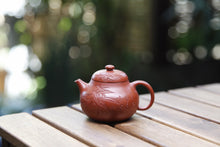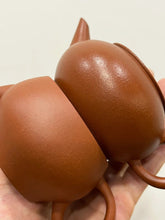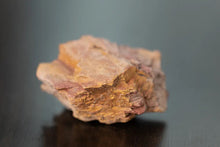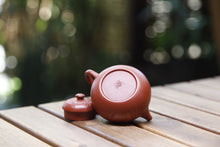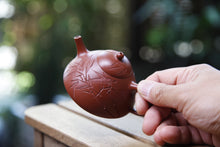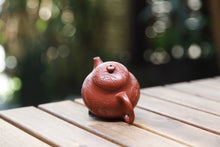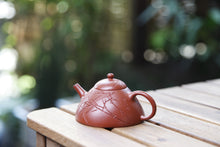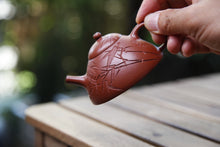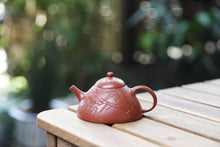
The vermilion clay pot, which originated in the late Ming and early Qing dynasties, stands out among Yixing purple clays because of its delicate ruddy, delicate and elegant feel, and is widely loved by pot lovers. Highlighting the ingenuity and delicacy, especially after the mid-Qing Dynasty, the shape of purple sand was integrated with art forms such as poetry, painting and calligraphy, gold and stone, sculpture, etc., and the cultural atmosphere was more intense. Coupled with the further development of the commodity economy in the Qing Dynasty, it also made Zhuni. In terms of material selection, color matching, shape, firing, subject matter, decoration and tools, the pot is more advanced than the Ming Dynasty. In addition, in the field of red clay pots, a batch of famous red clay pots has been born for a century. Artists, they have played a vital role in the development of the vermillion clay pot.
Today, Tongxinshe Teahouse brings you a full-scale replica of the classic vermilion pot "Li Hat Teapot" with a capacity of 100cc/"Wendan Teapot" with a capacity of 120cc. Painting in place will make the pot more charming. Bamboo is covered all over the wall and the lid. The knife is messy but not messy. The bamboo bones are strong and powerful. , in a few strokes.
Crimson mud belongs to the major series of red mud. It has been the top-grade material for making tea pots since the Ming and Qing dynasties, and is highly sought after by pot lovers. It is divided into three types: Zhaozhuang, Huanglongshan and small coal kiln. The mud used in this product is the vermilion mud from the small coal kiln mining area. It is the mud from the core part of the ore seam. It also reproduced the ancient vermilion mud refining process of raw sand. Careful pot friends will find that ancient vermilion mud is different from modern vermilion mud. If you look at the ancient cinnamon pots on the auction floor, there are often no The modern vermilion pot is so delicate, and the "impurities" and "black spots" seem to be too many, and the folds are different from the modern ones. This is the difference between the refining process of "raw sand" and "cooked sand". Today's cinnamon pots generally use the "cooked sand" process, because the shrinkage rate of cinnabar is very large, the cracking and deformation rates of the raw sand are particularly high, and the yield is very low, less than 60%, so in order to improve the finished product of cinnamon According to the rate, pot artists borrowed the china calcining process of porcelain, and calcined a part of the raw material of vermilion mud at a lower temperature, then pulverized it, and then mixed it into other raw materials for refining. It greatly improves the stability of firing, and the so-called "raw sand" is pure raw ore, raw sand and raw powder, which is directly refined with water after crushing.
First of all, most of the cinnabar mud ore is not sandy, so the cinnabar mud that can become sand is very rare. Often only the core mud of cinnabar mud ore is hard and can be sandy, and this part of the ore layer is usually very thin, only a few centimeters. To more than ten centimeters, and the breakpoints are distributed, so it is particularly difficult to find. After selection, the powder is directly sifted without mixing, so the raw sand cinnabar is more precious than ordinary cinnabar in terms of properties and refining process. Sand vermilion mud is more rare because it is raw sand and raw powder, which shrinks more, is more difficult to make, and has a lower yield.
After the traditional raw material cinnabar is fired, the appearance is simple, soft and moist, red but not bright, very charming. The cinnabar and purple sand under the modern technology is very "clean" and "glossy", and it does not change much after soaking.
The beauty of the ancient method of raw sand and vermilion mud is not the gorgeousness at the time of leaving the kiln, but the gradual change in the daily soaking. After soaking, the sand body is brightly crystalline, and the pulp is rich and layered. Ruddy and moving, those who are familiar with purple sand know that cinnabar pots have always been known in the industry for their excellent air permeability and water absorption, but in fact, when it comes to air permeability and water absorption, raw sand cinnabar pots can be called top grades. Not only that, through The purple clay pot made of raw sand and cinnabar does not choose tea leaves. Whether it is oolong tea, Pu-erh tea, black tea, green tea, or old white tea, it is very suitable for it.









